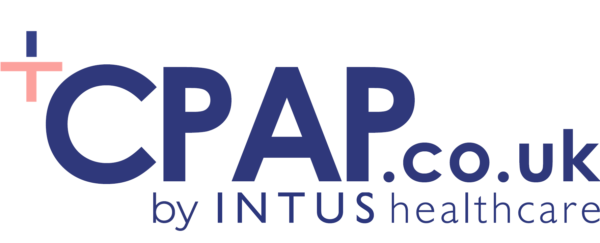Last updated on July 7th, 2023 at 02:10 pm
On the day which sees ‘portable testing’ recommended officially in the United States, I will share with you my experiences of one night using the SleepStrip. Not every sleep blogger (Michael Rack: “It’s all over”) thinks in-home testing is a good thing, but in a market where hundreds of thousands of undiagnosed and needlessly suffering people struggle to get started with suitable treatment, I think in-home testing has its place in the process.
The SleepStrip is one such product which can help ease the burden on the traditional screening and diagnosis pipeline. The NHS uses the SleepStrip to pre-screen suspected sleep apnoea sufferers. This way they know that someone booked in for a PSG or other form of clinical testing definitely experiences interrupted breathing patterns. For this purpose, the SleepStrip was found to be an inexpensive yet very useful tool for screening many patients in a very short time. This filtering role makes perfect sense and can speed up the process whilst bringing clarity to patients in terms of cause and effects.
The SleepStrip (see intro video on our video blog) is a one channel screening device worn between the nose and mouth during one night. It has a built-in battery and a tiny computer which analyzes the data gathered throughout the night. The SleepStrip has three respiratory flow sensors; two below the nostrils and one hanging over the upper lip. This way, no matter whether you breathe through nose or mouth, the SleepStrip will detect when you exhale.
The kit comes in an envelope sized package with the actual device packed in an airtight seal. There is use by date printed on the box, presumably because of the battery and glue used to stick to the face. Clear instructions are included in English.
The SleepStrip turns on automatically when you remove the stickers protecting the glue. A built-in red LED illuminates shortly and when it detects airflow via its sensors. This light will only come on during the first few minutes, but even if it lasted all night, it’s too weak to keep you awake anyway. It’s just to show you it’s working as expected. You then bend the nasal sensors so they are in the airflow’s path. Then it’s ready to put on. The glue, which is already on there, keeps the two outer ends firmly attached to your cheeks so the sensors sit snugly between your upper lip and nose.
The first 15 minutes or so this device sticking to your face obviously feels a bit foreign but I was surprised to find the glue-like attachment method to be easy on the skin. It didn’t burn or itch at all. I only remember waking ever so slightly just once, wondering what was touching my face but i quickly dozed off again. In the morning I woke up pleasantly surprised about the experience and curious about the outcome.
By detecting each time you stop breathing, the SleepStrip figures out an Apnoea Index ranging from 0 to 3. Zero means fewer than 15 breathing lapses per hour detected, scaling up to three meaning 40 apnoea events or more per hour. Based on that scale you could say: 0 – no sleep apnoea; 1 – mild sleep apnoea; 2 – moderate sleep apnoea and 3 – severe sleep apnoea.
The score is available an hour after you peel it off your skin and shows permanently on a display on the strip. As someone already on CPAP (but not that night, for testing purposes) the outcome was 2 (25-39 stops an hour), which shows my holistic efforts must have paid off over recent years as the original sleep clinic test showed over 100 apnoea events many moons ago.
The idea of the SleepStrip with the way it’s packaged is that you can send it back to where you purchased it or to your doctor/consultant who can read out the score along with your answers to a short questionnaire (ala Epworth Sleepiness Score). Together you can then decide how to proceed.
As the SleepStrip only records one channel, its findings alone is currently not accepted as a full diagnosis so it won’t get you a referral for CPAP immediately. If a doctor finds the results confirm their suspicion of sleep apnoea they may use this as the only means but it’s unlikely at this stage. They will probably use it to refer you to a clinic if it shows moderate to severe sleep apnoea, or to a dentist in the case of mild sleep apnoea.
Interesting to note, however, is the fact that the majority of NHS testing in the UK is done via a single channel device already. As we found earlier this year, two thirds of all UK sleep studies are oximetry alone. That means, you get a small device plugged on the end of one of your fingers which monitors blood oxygen saturation. These studies don’t look at breathing patterns at all. If those sleep studies detect blood oxygen drops and your symptoms point to OSA, that’s enough for the NHS to get you prescribed CPAP.
Based on those traditional and wide-spread methods of performing a sleep study, it seems odd that something like the SleepStrip does not (yet) qualify as a definitive yes or no for sleep apnoea. I guess the doctor’s involvement is key here. But at least the SleepStrip can help individuals find out for themselves whether what they experience is indeed related to breathing disruptions during their sleep. This knowledge can go a long way to determining what to do next. The SleepStrip can eliminate or confirm sleep apnoea so you know exactly what is and what isn’t happening during the night.
Finding out such an important answer to a potentially life threatening question with the SleepStrip is a lot faster than joining the waiting lists for an NHS test too. You can buy the SleepStrip without a prescription for around £50 and get it delivered the next day. If this had been around when I first got involved with Sleep Apnoea, I would have happily paid that £50 to ease my worries and take away my doubts. Even nowadays many GPs still don’t recognize OSA as a real health problem; a product like the SleepStrip will make it hard for them to ignore your pleading. If anything, this clever product can speed things up for you, a lot.
With the scarcity of diagnostics equipped hospital beds here in the UK (just 1 such bed per 330,000 people) I welcome this type of innovation in home-based sleep apnoea screening. With its clinically proven track record and scientifically sound methods, products like the SleepStrip can offer a much needed alternative to traditional testing methods.
More information about the SleepStrip:
- S.L.P. Ltd – SleepStrip manufacturers
- Talk About Sleep – about the SleepStrip
- Clinical Info
- FDA Approves “Sleep Mustache”
- High Cost of Undiagnosed Sleep Apnea
- Medical Design Excellence Award – SleepStrip wins in 2002
- SleepStrip Compares Favourably To Other Methods (PDF)
- PSG Compared to SleepStrip
- Buy the SleepStrip (UK/E.U.)
- Buy the SleepStrip (US)
Published: 7th November 2007

